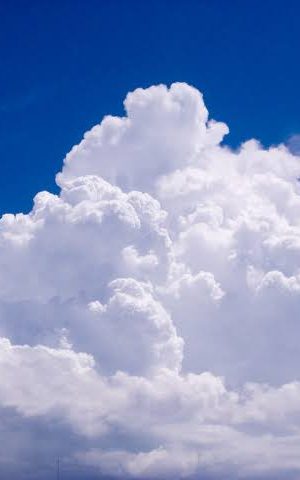
もんじゆばさつ
文殊菩薩
梵名のマンジュシュリー(Manju5rDを音写して文殊師利、さらに略して文殊といいます。獅子に
乗じて、普賢菩薩とともに釈迦如来の脇侍をつとめます。
文殊は智慧第一の菩薩として、「維摩1 」をはじめ、大乗仏典の中でたびたび重要な役柄として登場します。
文殊菩薩は、その真言の数によって、五字文殊、
一字文殊、六字文殊、八字文殊などがあり、また、それらの頭上の髪によって、五髪文殊、一髪文殊
などとも呼ばれています。「アーラーハーシヤーノウ」という五字の真言が大日如来の五つの智慧をあらわしているところから、五字文殊を文殊菩薩の本体とします。
卯年生まれの人の守り本尊とされています。
三昧耶形は青蓮華(青い熱帯睡蓮の花)、利剣、梵篋(椰子の葉に書かれた経典)など。種字はマン (मँ maṃ) 。
Monji Yubasatsu
Manjushri Bodhisattva
Manjushri (Manju5rD is transcribed and called Manjushri, or more abbreviated as Manjushri.
By multiplying, he will serve as a side samurai of Shaka Nyorai with Samantabhadra.
Bunshu, as the first bodhisattva of wisdom, often appears as an important role in the Mahayana Buddhist scriptures, including "Ima 1".
Bunshu Bodhisattva is a five-character Bunshu, depending on the number of mantras.
There are one-character manjushri, six-character manjushri, eight-character manjushri, etc., and depending on the hair above them, five-haired manjushri, one-haired manjushri, etc.
It is also called. Since the five-character mantra "Arahashanow" expresses the five wisdoms of Dainichi Nyorai, the five-character Bunshu is the main body of the Bunshu Bosatsu.
He is considered to be the guardian deity of people born in the year of the Rabbit.
His Sanskrit is a blue lotus flower (blue tropical water lily flower), a sword, and a suitcase (a scripture written on a palm leaf). He has a man (मँ maṃ).











 ニンニクの語源は「僧侶が隠して忍び食べていたところから」という説と、「荒行に耐えうる体力を養うために食したとされ、強烈な臭いとあらゆる困難に耐え忍ぶという意味の仏教用語、『忍辱』がなまって『ニンニク』となった」という2つの説があります。
ニンニクの語源は「僧侶が隠して忍び食べていたところから」という説と、「荒行に耐えうる体力を養うために食したとされ、強烈な臭いとあらゆる困難に耐え忍ぶという意味の仏教用語、『忍辱』がなまって『ニンニク』となった」という2つの説があります。
 応急処置にニンニクの絞り汁を3~5倍に薄めてガーゼなどにしみ込ませ、患部にあてればニンニクの強い殺菌力で消毒されます。(刺激が強すぎて痛みを感じる時には中止してください)
応急処置にニンニクの絞り汁を3~5倍に薄めてガーゼなどにしみ込ませ、患部にあてればニンニクの強い殺菌力で消毒されます。(刺激が強すぎて痛みを感じる時には中止してください) ニンニクとショウガをすりおろして薄力粉適量と水を混ぜ、ガーゼなどに厚めに塗って患部に当ててください。ニンニクの成分が局所に働きかけ、末梢血行をよくして、こりや筋肉の痛みを緩和します。
ニンニクとショウガをすりおろして薄力粉適量と水を混ぜ、ガーゼなどに厚めに塗って患部に当ててください。ニンニクの成分が局所に働きかけ、末梢血行をよくして、こりや筋肉の痛みを緩和します。 ニンニク2~3片を柔らかく蒸し(電子レンジで加熱してもOK)、ガーゼ状の袋に入れて風呂の中に入れます。ニンニクのエキスが風呂の湯に溶けて、血行がよくなり腰痛に効きます。
ニンニク2~3片を柔らかく蒸し(電子レンジで加熱してもOK)、ガーゼ状の袋に入れて風呂の中に入れます。ニンニクのエキスが風呂の湯に溶けて、血行がよくなり腰痛に効きます。 水虫の正体は白癬菌(はくせんきん)という角質層に寄生するカビの一種。したがって、この白癬菌をニンニクの殺菌力で殺すというわけです。ニンニクをすりおろし、その汁を患部にたっぷり塗るか、布にしみ込ませて患部にあてます。
水虫の正体は白癬菌(はくせんきん)という角質層に寄生するカビの一種。したがって、この白癬菌をニンニクの殺菌力で殺すというわけです。ニンニクをすりおろし、その汁を患部にたっぷり塗るか、布にしみ込ませて患部にあてます。 ニンニクとショウガをすりおろしたものに蜂蜜を入れてお湯で割って飲んでください。ニンニクの保温効果や発汗作用などによって、自然治癒力を高めます。
ニンニクとショウガをすりおろしたものに蜂蜜を入れてお湯で割って飲んでください。ニンニクの保温効果や発汗作用などによって、自然治癒力を高めます。 ニンニクには鎮静効果があり、夕食後にニンニク酒(5cc)を飲むと、血行がよくなり、保温効果が高まり、不眠解消に役立つとされます。
ニンニクには鎮静効果があり、夕食後にニンニク酒(5cc)を飲むと、血行がよくなり、保温効果が高まり、不眠解消に役立つとされます。 ニンニクの薄皮をとって、ハチミツに6ヵ月間ほど漬け込みます。1日に1~2片食べます。2ヵ月以上継続して食べることで、効果が出てきます。
ニンニクの薄皮をとって、ハチミツに6ヵ月間ほど漬け込みます。1日に1~2片食べます。2ヵ月以上継続して食べることで、効果が出てきます。 ニンニクとショウガをすりおろし、熱湯を注いで飲みます。3ヵ月間ほど続けると、血行がよくなり、全身に活力が戻ります。
ニンニクとショウガをすりおろし、熱湯を注いで飲みます。3ヵ月間ほど続けると、血行がよくなり、全身に活力が戻ります。
 えめな点も人気の理由のひとつ。しかし一見同じに思えるiPad miniでも、機能等の違いにより価格が変わります。初めてiPadシリーズの購入を検討している方にとってはどうも複雑で、疑問点が多いのではないでしょうか。今回の記事では、iPad miniの価格や、購入時のポイントなどをご説明していきます。【参考】
えめな点も人気の理由のひとつ。しかし一見同じに思えるiPad miniでも、機能等の違いにより価格が変わります。初めてiPadシリーズの購入を検討している方にとってはどうも複雑で、疑問点が多いのではないでしょうか。今回の記事では、iPad miniの価格や、購入時のポイントなどをご説明していきます。【参考】
















